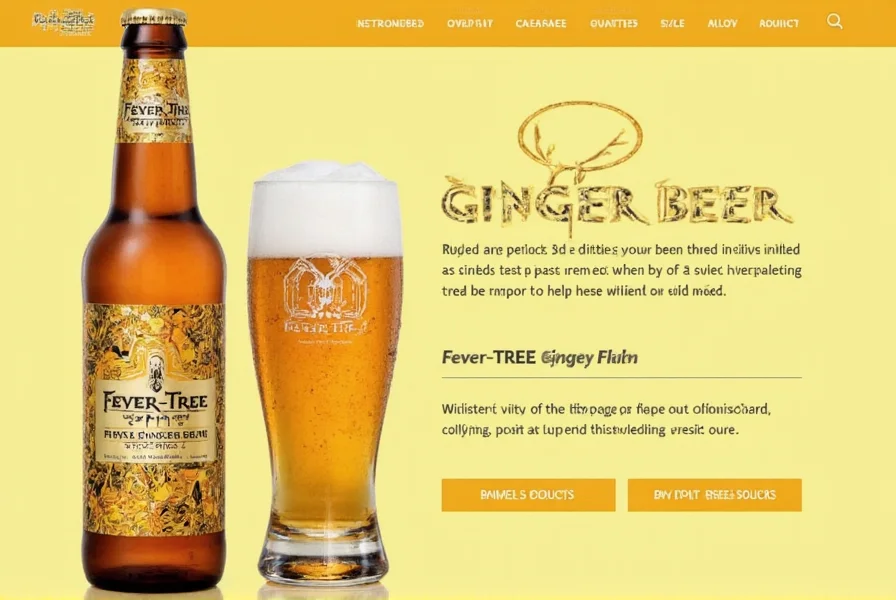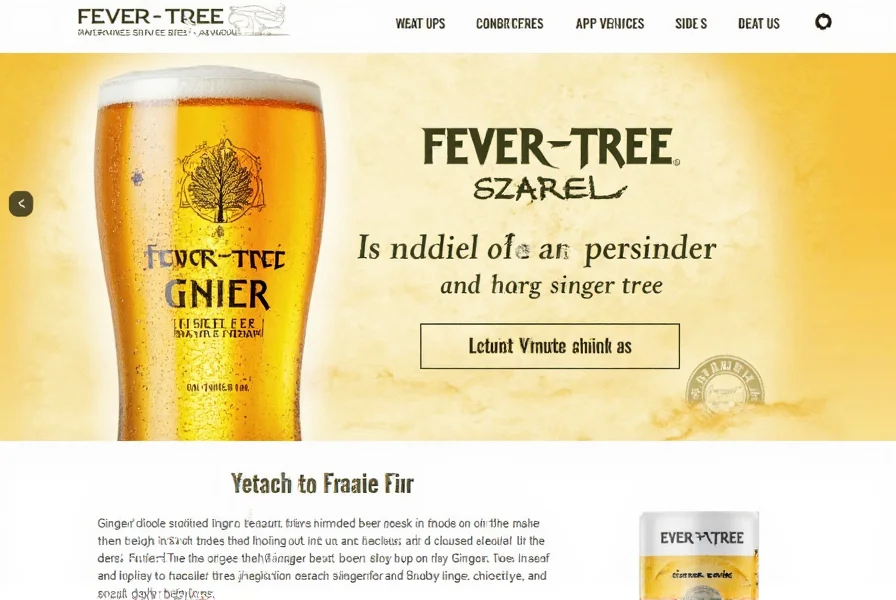The Fever-Tree brand has established itself as a leader in the premium mixer category since its founding in 2005. Created by Charles Rolls and Tim Warrillow, the company revolutionized the mixer market by focusing exclusively on high-quality, natural ingredients without artificial sweeteners or preservatives. Their commitment to sourcing the finest botanicals globally has made Fever-Tree the mixer of choice for discerning consumers and bartenders worldwide.
Brand History and Founding Principles
Fever-Tree emerged during a time when most mixers contained high-fructose corn syrup and artificial flavors. The founders recognized an opportunity to create premium alternatives that would complement, rather than overpower, fine spirits. Their first product, Indian Tonic Water, launched in 2005, featured quinine sourced from the 'fever trees' of East Africa, which inspired the brand name. This dedication to authentic ingredients and traditional production methods set Fever-Tree apart from competitors.

Ginger Beer Product Range
Fever-Tree offers several ginger beer varieties, each crafted with specific cocktail pairings in mind:
| Product Name | Key Ingredients | Recommended Pairings |
|---|---|---|
| Regular Ginger Beer | Jamaican ginger, citrus oils | Dark rum, bourbon |
| Refreshingly Light Ginger Beer | Less sugar, same ginger intensity | Vodka, light rums |
| Arctic Ginger Beer | Cold-pressed ginger, mint | Gin, tequila |
What distinguishes Fever-Tree ginger beers is their use of three different ginger varieties sourced from Nigeria, Ivory Coast, and India. This multi-origin approach creates a complex flavor profile with the perfect balance of heat and spice. The ginger is cold-pressed within hours of harvesting to preserve its volatile oils and authentic taste.
Official Website Features and Resources
Visitors to the Fever-Tree official website will find comprehensive information about their entire product line, including detailed ingredient explanations and sourcing stories. The site features:
- Interactive cocktail recipe finder with step-by-step instructions
- Information about sustainable sourcing practices
- Store locator for finding retailers worldwide
- History of the brand and its founders
- News about product innovations and awards
The website's design reflects the brand's premium positioning with clean aesthetics that highlight their distinctive bottle designs. Navigation is straightforward, allowing users to quickly find product information, cocktail inspiration, or purchasing options. Unlike many beverage brands, Fever-Tree's site focuses on education about mixer quality rather than direct e-commerce, directing consumers to established retailers instead.
Commitment to Quality Ingredients
Fever-Tree's ingredient philosophy centers on what they call the 'Golden Rule'—using the same quantity of a key botanical as would be used if making the mixer from scratch at home. For their ginger beer, this means each bottle contains 38g of ginger, equivalent to what a bartender would use when crafting a ginger syrup from fresh root.
This commitment extends to their entire product range. Their tonic waters use African quinine, their lemonades feature Sicilian lemons, and their bitter lemon incorporates both lemon juice and bitter lemon peel. The brand works directly with growers in multiple countries to ensure consistent quality and ethical sourcing practices.
Global Availability and Market Position
From its UK origins, Fever-Tree has expanded to over 100 countries worldwide. The brand maintains consistent product formulations across markets while adapting packaging sizes to local preferences. In the United States, Fever-Tree holds the largest market share in the premium mixer category, with their ginger beers particularly popular among craft cocktail enthusiasts.
What began as a response to the growing craft cocktail movement has evolved into a category-defining brand. Independent taste tests consistently rank Fever-Tree ginger beer above competitors for its authentic ginger flavor and balanced sweetness. The brand's success demonstrates how premium ingredients in mixers can significantly elevate cocktail experiences.
Fever-Tree's Role in the Premium Mixer Movement
Fever-Tree didn't just enter an existing market—they helped create the premium mixer category. Before their launch, most consumers viewed mixers as afterthoughts rather than essential cocktail components. The brand's educational approach, emphasizing how mixer quality affects the entire drink, changed consumer expectations industry-wide.
Today, many spirit brands recommend specific Fever-Tree mixers for their products, recognizing the synergy between premium spirits and premium mixers. This partnership approach has elevated the entire cocktail experience, moving beyond the 'fever-tree ginger beer brand website' search to establish Fever-Tree as an authority in mixology education.
Frequently Asked Questions
What makes Fever-Tree ginger beer different from other brands?
Fever-Tree uses three different ginger varieties sourced from Nigeria, Ivory Coast, and India, cold-pressed within hours of harvesting. Each bottle contains 38g of ginger, significantly more than most competitors, creating a complex flavor profile with balanced heat and spice without artificial sweeteners or preservatives.
Where can I find authentic Fever-Tree products online?
The official Fever-Tree website (fevertree.com) provides a store locator for authorized retailers. Authentic products can be found at major grocery chains, liquor stores, and online beverage retailers. Be cautious of third-party sellers on marketplace platforms who may offer expired or improperly stored products.
Does Fever-Tree offer sugar-free ginger beer options?
Yes, Fever-Tree produces Refreshingly Light Ginger Beer, which has 45% less sugar than their regular ginger beer while maintaining the same ginger intensity. They achieve this through careful formulation rather than artificial sweeteners, using a blend of natural sugars and alternative sweetening methods.
How should Fever-Tree ginger beer be stored for best quality?
Unopened bottles should be stored in a cool, dark place away from direct sunlight. Once opened, refrigerate and consume within 3-5 days for optimal flavor and carbonation. The brand recommends serving their ginger beers chilled but not over-iced to preserve the complex ginger notes that can be muted by extreme cold.
What cocktail pairs best with Fever-Tree ginger beer?
Fever-Tree's regular ginger beer pairs exceptionally well with dark spirits like bourbon or dark rum for a premium Dark and Stormy. Their Refreshingly Light variety works beautifully with vodka or light rums, while the Arctic Ginger Beer complements gin or tequila in spicy cocktails. The brand's website features an extensive cocktail recipe database organized by spirit type.











 浙公网安备
33010002000092号
浙公网安备
33010002000092号 浙B2-20120091-4
浙B2-20120091-4